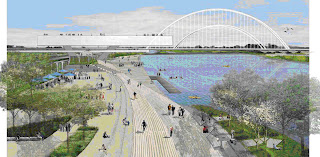Last week I took a short break from my refusal to manage and we all recorded how we spent our time during the week. So far I have only compiled the information for the 3.5 employees (including myself) that we have at Central Dallas CDC, not our various contract workers, but I’m already finding some interesting things.
First, Central Dallas CDC officially works on a 37.5 hour week, so if everybody worked the required hours and no more, that would be just over 130 hours total per week. The actual total last week was 175 hours—so we worked more than enough hours to justify another full time employee (no worries about overtime, we are all exempt employees). I believe in hard work, probably more strongly than you can imagine, but too many fifty hour weeks (for years on end now) can wear on people. That’s especially true because I think the actual hours worked were higher than those recorded. Just reading through the time sheets I noted that a number of tasks I know were done during the week were never recorded.
Here’s how we spent our time:
First, Central Dallas CDC officially works on a 37.5 hour week, so if everybody worked the required hours and no more, that would be just over 130 hours total per week. The actual total last week was 175 hours—so we worked more than enough hours to justify another full time employee (no worries about overtime, we are all exempt employees). I believe in hard work, probably more strongly than you can imagine, but too many fifty hour weeks (for years on end now) can wear on people. That’s especially true because I think the actual hours worked were higher than those recorded. Just reading through the time sheets I noted that a number of tasks I know were done during the week were never recorded.

Here’s how we spent our time:
Here are my thoughts on how we spent our time:
CityWalk—Our largest project took the largest portion of our time. That’s both good and expected.
Administration—This time was mostly answering the telephone on matters not related to an ongoing project. I think I need to hire someone to answer the telephone. Right now the system is only that whoever picks up the telephone first deals with it. Both the amount of time and number of interruptions are a problem. Not hiring a receptionist is probably penny wise and pound foolish.
Marketing/Fundraising—This is usually a significant number in nonprofits, but for us it’s even larger because I attend so many meetings (and skip even more that I probably should attend). This is mostly the time of Lori Beth Lemmon-Harrison, Director of Fundraising and Marketing, and me. Next time I’ll separate these two areas. The functions are related, but not the same—especially since we take a broad view of marketing.
Operating Properties—This time is mostly from Judy Lawrence, our property manager and seems about on target for our current operations. Right now we run three small apartment complexes, but when CityWalk opens and we have five times the number of units that we do now, I’m sure this category will require more time.
Government Relations—Johnice Woods handles this area. It takes up way more time than I like, but I don’t think I can do anything about it. There are rules and regulations, you know!
Neighborhood Stabilization Program—A big new initiative that will unroll this fall. We’re going to try to rebuild an entire low income neighborhood. Somehow, someway, we’re going to have to spend more time on this.
Review of New Projects—This time is mostly mine. Every week I look at a bunch of new ideas. Some of them originate with me, but a lot of them are brought to me to look at, sometimes by people we barely know. It’s like looking for a needle in a haystack, but sometimes you find one. All the projects we are doing started here.
The Cottages—This is another new project that I can’t even talk about yet. It’s going to need a lot more time over the next year.
Re:Vision Dallas—Yikes! Re:Vision Dallas will need bunches of more time as well.
Patriot Solar Power—Patriot Solar Power will get more time this week, and we have grant requests out to a number of organizations to fund this work.
People Against Drugs—A long story, but we’re temporarily caretakers for another nonprofit.
Cabana—A stalled project that won’t go forward until 2011 at best, but once in awhile we need to check back on it.
Central Dallas Ministries Resource Center—We’re helping CDM out a little by consulting on its efforts to build a new resource center.
Plaza—Proving that no good deed goes unpunished, once in a while something needs to be done to finish cleaning up this project, which failed last spring. Usually paying somebody’s bill.
Columbia—A pair of duplexes that we built and need to either sell or lease. I better make sure we spend a little more time making sure one of those things happens.
As you see, we’re working on a lot of projects, and a few are still missing here. Apparently we just didn’t get to them last week. Fortunately, there is always next week.
CityWalk—Our largest project took the largest portion of our time. That’s both good and expected.
Administration—This time was mostly answering the telephone on matters not related to an ongoing project. I think I need to hire someone to answer the telephone. Right now the system is only that whoever picks up the telephone first deals with it. Both the amount of time and number of interruptions are a problem. Not hiring a receptionist is probably penny wise and pound foolish.
Marketing/Fundraising—This is usually a significant number in nonprofits, but for us it’s even larger because I attend so many meetings (and skip even more that I probably should attend). This is mostly the time of Lori Beth Lemmon-Harrison, Director of Fundraising and Marketing, and me. Next time I’ll separate these two areas. The functions are related, but not the same—especially since we take a broad view of marketing.
Operating Properties—This time is mostly from Judy Lawrence, our property manager and seems about on target for our current operations. Right now we run three small apartment complexes, but when CityWalk opens and we have five times the number of units that we do now, I’m sure this category will require more time.
Government Relations—Johnice Woods handles this area. It takes up way more time than I like, but I don’t think I can do anything about it. There are rules and regulations, you know!
Neighborhood Stabilization Program—A big new initiative that will unroll this fall. We’re going to try to rebuild an entire low income neighborhood. Somehow, someway, we’re going to have to spend more time on this.
Review of New Projects—This time is mostly mine. Every week I look at a bunch of new ideas. Some of them originate with me, but a lot of them are brought to me to look at, sometimes by people we barely know. It’s like looking for a needle in a haystack, but sometimes you find one. All the projects we are doing started here.
The Cottages—This is another new project that I can’t even talk about yet. It’s going to need a lot more time over the next year.
Re:Vision Dallas—Yikes! Re:Vision Dallas will need bunches of more time as well.
Patriot Solar Power—Patriot Solar Power will get more time this week, and we have grant requests out to a number of organizations to fund this work.
People Against Drugs—A long story, but we’re temporarily caretakers for another nonprofit.
Cabana—A stalled project that won’t go forward until 2011 at best, but once in awhile we need to check back on it.
Central Dallas Ministries Resource Center—We’re helping CDM out a little by consulting on its efforts to build a new resource center.
Plaza—Proving that no good deed goes unpunished, once in a while something needs to be done to finish cleaning up this project, which failed last spring. Usually paying somebody’s bill.
Columbia—A pair of duplexes that we built and need to either sell or lease. I better make sure we spend a little more time making sure one of those things happens.
As you see, we’re working on a lot of projects, and a few are still missing here. Apparently we just didn’t get to them last week. Fortunately, there is always next week.


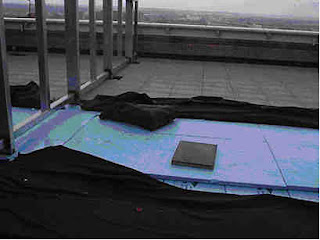





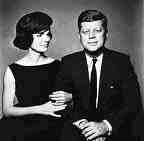


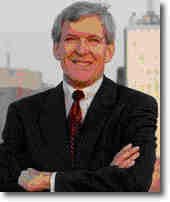

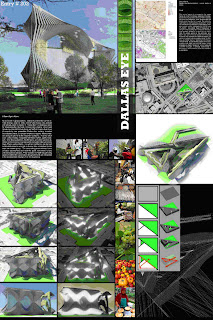






 In Dade County Florida, the canvassing board was in the process of a recount in the Bush-Gore Presidential election, when a large group of angry protestors appeared and intimidated the election board into abandoning the recount.
In Dade County Florida, the canvassing board was in the process of a recount in the Bush-Gore Presidential election, when a large group of angry protestors appeared and intimidated the election board into abandoning the recount.











